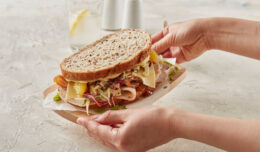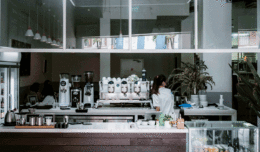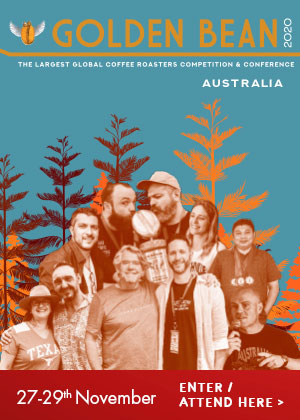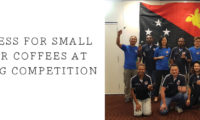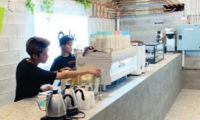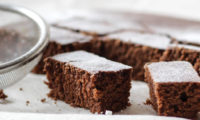I’m going to pass on the benefit of a lifetime of drinking tea and what seems as long studying tea, tasting tea, and developing tea for a variety of end uses. Specifically, my time as tea taster, buyer, and R& D officer for Bushells is worth reflecting about. And I’ll give a wide berth to the detailed figures …
These figures change according to so many variables: type, grade, brew method, time, volume and whim, that I can never remember them anyway, and it keeps this article original. And we’ll keep an Australian focus, as what is preferred does change by country – but that’s another chapter.
I’ve heard so many stories for and against leaf tea, tea bags and instant tea, and we need to put that into some perspective.
So why is something that tastes good actually so good for us?
Leaf teas made from the varieties Camellia Sinensis and Camellia Assamica are historically what Australians have used since the first European landing. For centuries, tea garden workers plucked the traditional two leaves and a bud, and it was withered, rolled, fermented, fired and sieved into a number of grades for sale to the world, mostly for blending into proprietary labels. For the most part, the western world was only aware of black teas, with green teas – the domain of the oriental – unknown.
My simple science knowledge tells me that tea contains more antioxidants than most other classes of food, including green vegetables. Catechins, known as phenols or antioxidants in green tea, are largely transformed into extended molecular polyphenols, or antioxidants, such as theaflavins and thearubigins in black teas via the process of fermentation. These antioxidants make up at least 25% of dry weight of tea, and most of this is extracted to a brew. Polyphenols largely determine the colours and flavours of tea. Tannin, that provides the bitter sweet taste of tea is a Polyphenol.
Most of us are aware of black teas, oolong teas, green teas and white teas. What you probably do not know is that in the same simple order, the antioxidant value of those teas increases. The most manufactured tea has the least antioxidants, and the least processed the most antioxidants. Black tea is plucked, withered, rolled, fermented, fired and graded; oolong tea semi-fermented and lightly fired; green tea not fermented, and steamed or pan fired to prevent fermentation; and white tea withered, sometimes hand rolled and gently dried and left about as close to natural as minimal handling will allow. It is said some white teas, like the white downy buds of Yin Zhen, have up to five times the anti-oxidants of black tea.
Tea bag teas are generally a mix of small leaf orthodox (rolled) and CTC (crush tear curl) with larger surface area than full leaf teas. This is good for quick infusion but not good for quality, as it oxidises faster, losing antioxidants and flavour. Small leaf can be used in a drip filter to produce thick, strong tea quickly, but good flavoury tea takes time to infuse. And caffeine is not so different to flavour. It will dissolve faster in small leaf for high caffeine levels, and therefore large leaf teas can be natural low caffeine teas if not over infused.
But don’t consider tea bags as bad. Small leaf tea bags are easy and fast brewing, suitable anywhere that a tea pot is not convenient. And now we have a whole new range of large leaf bags, including biodegradable, transparent, Soilon pyramid bags. Soilon is good for the environment and good for the consumer to see the quality of leaf in the bag. Tea drinkers should expect to find good quality leaf tea in a soilon pyramid bag, a large cut above small leaf bags.
And then we have instant tea, which is even more processed. Quite frankly, I think that instant tea should only be used in vending machines on remote abandoned railway stations. Simply put, it lacks flavour and has minimal antioxidant value and therefore negligible lifestyle value … not recommended for the café experience.
So how easy is it to make tea in a café? And why take the time to do it properly?
One teaspoon for each cup and one for the pot, boiling water and 4 to 5 minutes brewing time produces a number of cups of tea. In Australia, the ”billy” on the fire or kettle on the stove for a ”cuppa” was essentially the Australian way for two centuries. Even the early Italian and Greek immigrants were quickly introduced to the mandatory cuppa on building sites around the country, such was the strength of our British heritage.
Instant coffee made it easy to produce a cup of coffee, and it was embraced by consumers impressed with newfound convenience. In the 1960s, tea made a play for the same convenience market with a good quality freeze dried product from Kenya but, as the Poms didn’t take to it like us downunder, the venture failed.
At that point in time, Sydney based Bushells had four tea bag machines in Melbourne, sent there by the Managing Director to suggest that the company was keeping up with trends but in reality, to bury the idea.
However, a few years later under British control, the tea department at Bushells started tasting tea and paper to formulate a whole new teabag launch. Bushells was building a tea bag facility at Concord, with the plan to become market leader in a tea world quickly becoming dominated by tea bags. And it did just that! The rest is history, and today we have a market primarily made up of imported brands, with emphasis on tea bags.
But there is a developing new breed of home grown tea companies supplying a wide variety of specialty leaf teas and tea bags to a market hungry for new products.
The specialty market has developed out of a need for better lifestyle, including trends in dining, relaxation, stimulation, flavours, health, variety, and peer group responses to determining what is best. And for that matter, what is tea?
So what tea will I use in my café? Will it be leaf tea or tea bags?
First of all, put it in perspective and answer this question.What coffee will I use in my café, freshly roasted beans or instant coffee? Of course, there is only one answer.
It should be the same for tea. After all, what is a café unless it offers consumers the best experience possible? Otherwise, tea drinkers will find one that will, and their coffee friends will follow.
It wasn’t that long ago that a large proportion of the market used to make cappuccinos from instant coffee and steam the milk on a Haros boiler. There might even be one or two still hanging around country Victoria, where they were most prominent, but they should be in an antique store.
Today, a café owner would be committing business suicide at the suggestion. There is no comparison between fresh roasted beans extracted through an espresso machine to that instant coffee cousin that is still the choice of many home owners, office workers and busy lifestyles. But the same people will not drink instant coffee in a café. They expect the expensive espresso machine, the professional barista and of course, great coffee. And the majority of tea drinkers are the same; they increasingly expect good tea to be served in a café. Why should they be treated so poorly compared with a coffee drinker? So the best choice is good leaf tea.
Just as some well known tea houses are now including good coffee to gain mixed groups of beverage lovers, so must coffee houses include good tea or lose customers. And make sure you have a fresh source of water and avoid using over heated stale water from espresso machine boilers.
And finally, I was fortunate to meet the tea buyer for the world’s largest coffee chain when in Colombo recently. They have identified good tea as essential to growth. In Australia, where tea is part of our heritage and natural things a green ethos, it is intuitive that we set the trends.
“Life wasn’t meant to be easy my child, but take courage: it can be delightful” – George Bernard Shaw.
And so is good leaf tea and good coffee.












